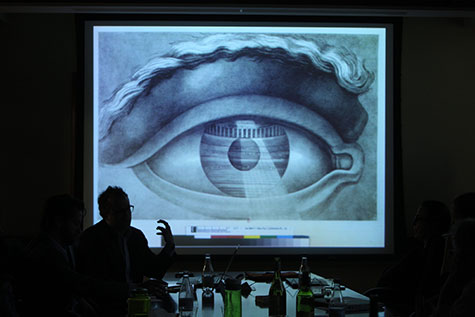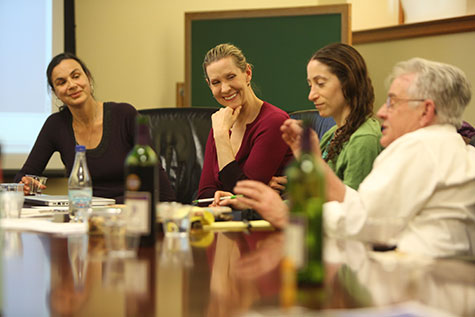
One of the first U.S. artists to hold an academic appointment in a scientific unit, at the University of Michigan, Olynyk has collaborated with particle physicists and biologists; investigated the histories of anatomical models and medical devices; and deployed scanning electron micrographs to create an installation for the National Academy of Sciences in Washington, D.C.
This spring, Olynyk, who directs the Graduate School of Art in the Sam Fox School of Design & Visual Arts at Washington University in St. Louis, has launched the university’s new Art|Sci Initiative and Fellows Program. Funded primarily by a grant from the Skandalaris Center for Entrepreneurial Studies, the fellows program includes 14 faculty representing a wide variety of disciplines — from medicine and neuroscience to biology, psychology, sculpture, architecture, theater and philosophy — as well as three MFA graduate students.
We sat down with Olynyk, the Florence and Frank Busk Professor of Art, to discuss collaboration, common interests and the keys to making it work.
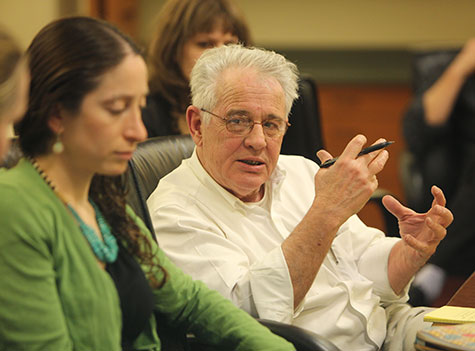
Conversations about art and science often focus on differences, but your work emphasizes commonalities. Talk about the role of inquiry.
One of the most interesting debates I ever heard was between two particle physicists. The first argued that, in conducting an experiment, one needs to remain open to any outcome. The second argued that unless one is prepared, the discovery might happen without the scientist recognizing it. So we think of science as very specific and empirical, but there really isn’t a single methodology.
Artists don’t typically start with a hypothesis, or structure their practice to prove that hypothesis. But I think that artistic practice can itself be a form of research and knowledge production. In art, the outcomes may be more open-ended, but they’re driven by a similar process of inquiry and desire for discovery.
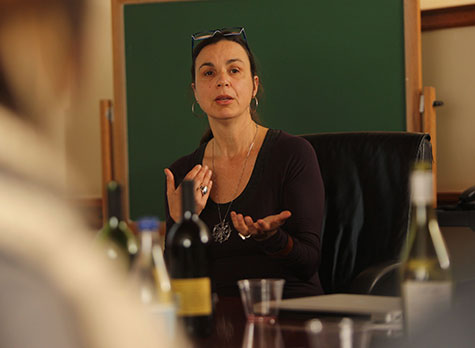
The Art|Sci Initiative is structured around research presentations by the faculty fellows and visiting speakers. What sorts of common themes or interests have you observed?
Perception, the function of the human brain and the phenomenology of sensing are topics in multiple disciplines – in art, in cognitive science and the medical humanities. The visual conception of the human body is another point of connection. Anatomists like Andreas Vesalius, Clemente Susini and Anna Morandi Manzolini have made incredible drawings and models that are fashioned to look like living, breathing human beings. They’re not just medical dummies. Their very gestures and modes of representation remind us that science and medicine are culturally constructed and that neither is value-neutral.
But whether something is art or science is perhaps the least interesting question. The more interesting questions have to do with how these images live in the world. How are they distributed, how are they shaped by context? What kind of inquiries are prompted by seeing that image in a humanities versus a laboratory setting? What is the role of aesthetics in science and medicine, and at what point does a scientific image become an aesthetic image?
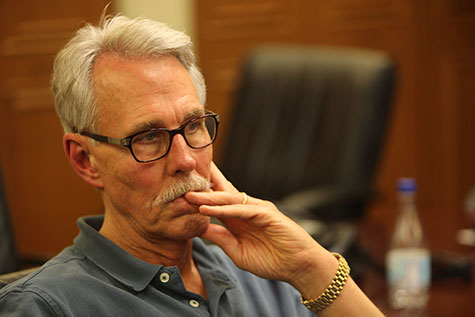
The tone of the meetings seems very friendly and collegial. As the convener of the conversation, what’s the key to making it work?
Artists, scientists, humanists — we’re all engaging the world of ideas. So it’s really no surprise that when you bring all three together, you get a very robust, engaged conversation. But it can’t be forced. The primary goal of the Art|Sci Initiative is simply to create a platform for cross-disciplinary conversations — to give people the opportunity to share their research and creative work, and to allow for serendipitous exchanges to occur.
It’s not about starting a business or dictating a project. The key is to adopt a kind of “risk capital” thinking, to develop stakeholders, to invest in the conversation whatever the outcome.
We’re a research institution. Ideas are the coin of the realm.
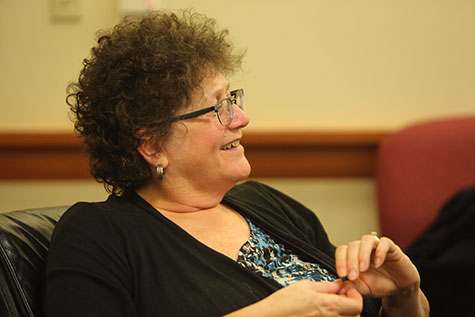
What pitfalls are you guarding against?
We’re still early in the process, so we haven’t hit any pitfalls yet! [Laughs.] But in general, one wants to avoid producing things that don’t advance inquiry in either direction. In the past, artists have sometimes felt used by scientists as simply illustrators, and certainly some scientists have felt their ideas were misrepresented in an artist’s work.
Neither scenario helps to advance reasoned debate on some of the more controversial advances in science and medicine. The point here is to create a kind of third territory.
In both art and science, it seems like half the battle is figuring out which questions to ask. The problem with a top-down approach — with mandating specific collaborations or timeframes — is that it shortchanges the process.
Absolutely. We’re all coming to the table without presumption or agenda. The space is “agnostic” in the sense that it is open to everyone but owned by no one.
I think that’s when the really interesting questions are formulated. That’s when knowledge and creative work are able to advance in original ways.
